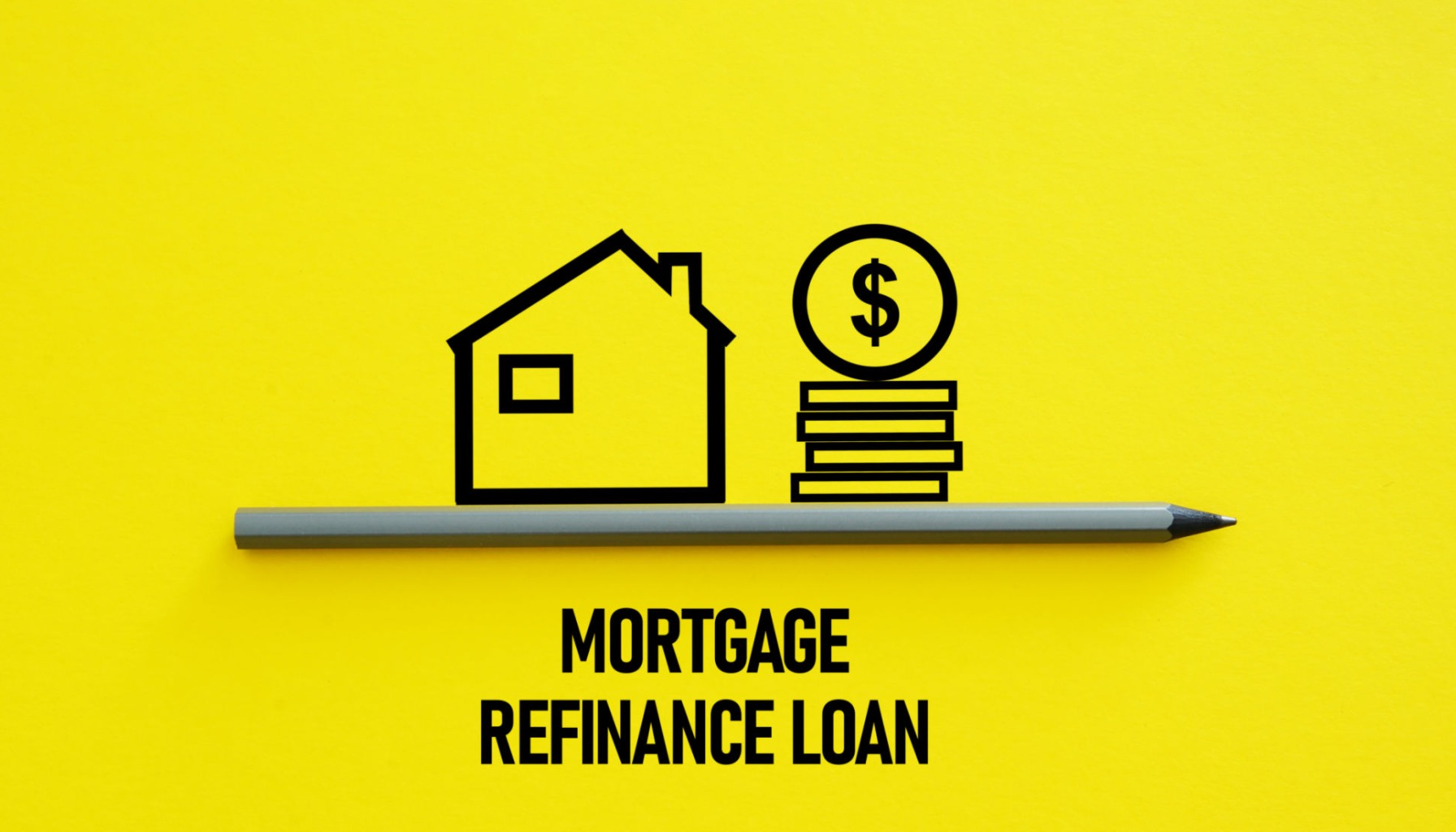Are you looking to lower your monthly payments? The 30-year fixed refinance rate has dropped by 12 basis points recently, landing at a national average of 6.87%. This is a significant move, and for many, it signals a prime opportunity to consider refinancing their home loan.
It’s easy to get caught up in the daily numbers, but a 12-basis point swing is more than just a statistic; it’s a tangible benefit that can translate into real savings. As someone who’s been following the mortgage market closely, I’ve seen how even small shifts can impact homeowners’ finances. This latest move, according to Zillow's data, is definitely one to pay attention to.
Mortgage Rates Today: 30-Year Fixed Refinance Rate Drops by 12 Basis Points
Understanding the Drop: A Closer Look at the Numbers
Let's break down what’s really happening. Zillow reported that on Saturday, October 11, 2025, the national average 30-year fixed refinance rate settled at 6.87%. This is a decrease of 2 basis points from the previous day, but more importantly, it's a substantial 12 basis point improvement when compared to the previous week’s average of 6.99%.
It’s not just the long-term fixed rates that are seeing movement. For those considering a shorter-term commitment, the 15-year fixed refinance rate has also decreased by 5 basis points, now standing at 5.73%. Meanwhile, the 5-year adjustable-rate mortgage (ARM) refinance rate is holding steady at 7.54%.
What a 12 Basis Point Drop Really Means for Your Monthly Payments
You might be asking yourself, “Okay, 12 basis points, but what does that really translate to in my monthly budget?” Let’s put this into perspective. For a \$300,000 loan, a drop from 6.99% to 6.87% can shave off roughly \$25 to \$30 per month from your mortgage payment. Over the course of a year, that’s an extra \$300 to \$360 in your pocket. Again, it might sound small, but over the life of a 30-year mortgage, these savings add up significantly, potentially saving you thousands of dollars.
The Federal Reserve’s Role in Mortgage Rates: A Mid-October 2025 Outlook
To truly understand why these rates are moving, we need to look at the bigger economic picture, and a major player here is the Federal Reserve. In late September 2025, the Fed made a significant move by cutting its benchmark interest rate. This was the first cut of the year, and it came after a pause in rate hikes. The Fed moved its target range from 4.25%-4.5% down to 4.0%-4.25%.
This decision wasn't made in a vacuum. The economic data the Fed was looking at presented a bit of a mixed bag:
- Inflation: While still a concern, it's been showing signs of cooling. The core PCE price index, which the Fed watches closely, was sitting at 2.9% year-over-year. This is still above their 2% target, but it’s a step in the right direction.
- Economic Growth: The economy has been showing resilience, with real GDP growing at a strong 3.8% annualized rate in the second quarter.
- Labor Market: We're seeing some softening here, with job growth cooling and unemployment ticking up to 4.3%.
The Fed's job is to strike a delicate balance between keeping inflation in check and supporting a healthy job market. This rate cut signals their belief that inflation is gradually moderating and it's time to ease up on the monetary brakes.
The Critical Link: Treasury Yields and Mortgage Rates
So, how does the Fed’s decision trickle down to your mortgage? The primary way is through something called the 10-year U.S. Treasury yield. This is the benchmark that most lenders use to price 30-year fixed-rate mortgages. Think of it as the base interest rate that reflects the general cost of borrowing money over a longer period.
Currently, the 10-year Treasury yield is hovering around 4.12%, which is actually below its long-term average. Normally, you’d expect mortgage rates to closely follow these Treasury yields. However, there’s something called the “spread” – the difference between mortgage rates and Treasury yields. This spread has been a bit wider than usual lately, meaning that even when Treasury yields go down, mortgage rates don’t always drop as much as you might expect. Lenders price in additional risk and other factors into mortgage rates, which is why they are typically higher than the Treasury yield.
What does this mean for us? While the Fed's actions and the stabilizing Treasury yields are positive signs, the wider spread is moderating the full benefit for borrowers.
Refinance Timing: Locking in Rates Before Further Dips (Or Hikes!)
Given the current environment, you might be wondering: is now the right time to refinance? My experience tells me that when you see rates moving in your favor, it's certainly worth exploring. The fact that the 30-year fixed refinance rate dropped by 12 basis points suggests that lenders are becoming more competitive.
However, the market can be a bit unpredictable. While the Fed’s actions point towards potentially lower rates in the future, we also need to keep an eye on inflation and economic growth. If those factors suddenly shift, rates could also move back up. This is why it's often a good strategy to lock in a rate when you see a favorable trend, rather than waiting for the absolute lowest point, which can be elusive.
Comparing 30-Year Fixed vs. 15-Year Refinance Options
When you're thinking about refinancing, it’s crucial to consider which loan term best suits your financial goals.
- 30-Year Fixed Refinance: This is our headline rate, the 6.87%. With this option, your monthly payments remain the same for the entire life of the loan. It offers lower monthly payments, which can be great for cash flow, but you’ll pay more in interest over the long run.
- 15-Year Fixed Refinance: This option is now at 5.73%. While the monthly payments will be higher than a 30-year loan, you’ll pay significantly less interest overall and pay off your mortgage much faster – in half the time! This is a great option if you can comfortably afford the higher payments and want to build equity more quickly.
Here’s a quick comparison:
| Loan Term | Current Rate (Approx.) | Monthly Payment (Example: \$300k loan, 30 yrs) | Total Interest Paid (Example: \$300k loan, 30 yrs) |
|---|---|---|---|
| 30-Year Fixed | 6.87% | \$1,962 | \$406,413 |
| 15-Year Fixed | 5.73% | \$2,332 | \$119,698 |
*Note: These are illustrative examples and actual payments will vary based on loan amount, down payment, and other fees.
It’s a trade-off between lower monthly payments and long-term savings.
Recommended Read:
30-Year Fixed Refinance Rate Trends – October 10, 2025
How Your Credit Score Impacts Your Refinance Rate Today
It’s also worth remembering that the rates I’m quoting are national averages. Your personal refinance rate will very much depend on your individual financial profile, and your credit score is a huge factor. Generally, the higher your credit score, the better interest rate you'll qualify for. If you’ve been working on improving your credit, now might be a great time to check your score and see if you can unlock even better rates than the averages.
What’s Next? Key Factors to Watch
The Federal Reserve has set a new direction for rates, but they’ve also made it clear that their future decisions will be driven by incoming economic data. I'll be keeping a close eye on:
- Inflation: Is it continuing its downward trend towards the 2% target?
- Labor Market: Are we seeing more significant cooling, or is it stabilizing?
- Economic Growth: Is the economy maintaining its strength without reigniting inflation?
- Mortgage-Treasury Spread: Will this gap narrow, allowing mortgage rates to more fully reflect lower Treasury yields?
The bottom line is that while mortgage rates have improved, significant additional drops will depend on continued positive economic indicators and a narrowing of that spread. For now, though, this 12 basis point drop is a solid reason for homeowners to start exploring their refinancing options.
Maximize Your Mortgage Decisions
Thinking about whether to refinance now? Timing is critical, and having the right strategy can save you thousands over the life of your loan.
Norada's team can guide you through current market dynamics and help you position your investments wisely—whether you're looking to reduce rates, pull out equity, or expand your portfolio.
HOT NEW LISTINGS JUST ADDED!
Talk to a Norada investment counselor today (No Obligation):
(800) 611-3060
Recommended Read:
- When You Refinance a Mortgage Do the 30 Years Start Over?
- Should You Refinance as Mortgage Rates Reach Lowest Level in Over a Year?
- NAR Predicts 6% Mortgage Rates in 2025 Will Boost Housing Market
- Mortgage Rates Predictions for 2025: Expert Forecast
- Half of Recent Home Buyers Got Mortgage Rates Below 5%
- Mortgage Rates Need to Drop by 2% Before Buying Spree Begins
- Will Mortgage Rates Ever Be 3% Again: Future Outlook
- Mortgage Rates Predictions for Next 2 Years
- Mortgage Rate Predictions for Next 5 Years
- Mortgage Rate Predictions for 2025: Expert Forecast



